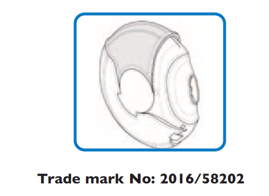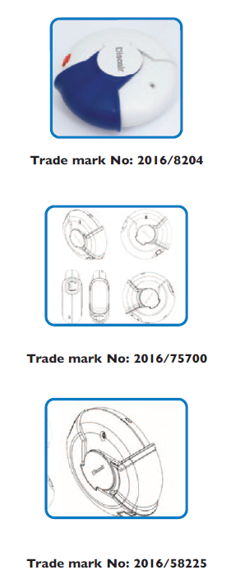The Turkish Court of Cassation (the CoC) issued a decision in which the registrability of a 3D medical device trade mark is discussed. This paper aims to provide the details of the matter and to remark upon its importance.

Background
A 3D device trade mark application covering goods in classes 5 and 10 was filed before the Turkish Patent and Trademark Office (the Office) and was rejected as the Office found the application as non-distinctive and descriptive.
Court Phases
The trade mark holder filed an action to cancel the Office’s decision rejecting the application with the following arguments:
- The 3D trade mark is not an ordinary device; it is a unique composite shape in which different parts are brought together,
- It is clearly different from the inhaler shapes available in the inhaler market as the trade mark is used by the
plaintiff for the first time, with the edge lines being holistic and the inflated balloon shape pressed from the bottom to the top, - It is an original shape that can be
perceived by any potential consumer without any difficulty, with elements such as a double round curved line that prevents the finger from slipping in the use of the device, - The trade mark has acquired distinctiveness due to use made of it on the market.
The first instance Civil IP Court (the IP Court) determined that the subject trade mark is descriptive for ‘Medicines for human and animal health, chemical products for medical and veterinary purposes, radioactive chemicals for medical and veterinary purposes’ in class 5 and ‘Surgical, medical, dental and veterinary apparatus, instruments and furniture’ in class 10. Therefore, the IP Court decided that this 3D shape should not be monopolized by one party. Also, the IP Court revealed the trade mark has no abstract distinctiveness for the rest of the goods which is an obstacle for registering a trade mark. The IP Court finally stated that acquired distinctiveness was not proved by the plaintiff. As a result of this assessment, the IP Court rejected the case.
Upon appeal of the plaintiff, the matter was reviewed by the Regional Court of Appeal (the RCA). The RCA rejected the plaintiff’s appeal with the same reasoning.
Finally, the matter was reviewed by the Court of Cassaation (the CoC) which upheld the RCA’s decision on 1 June 2020.
Comment
It can be seen that the CoC’s perspective is the same as the Office, the IP Court and the RCA. Even if the subject trade mark is rejected in the end, there are several 3D device trade marks within the Office’s records, which are registered on behalf of the plaintiff without facing any ex-officio rejection:

There is a significant difference between these trade marks and the rejected application: the addition of Discair word element. Discair is also a registered wordmark before the Office covering goods in classes 5 and 10. These examples show that details of the 3D trade marks such as distinctive word elements are significantly taken into consideration for registrability examination.
Download PDF
